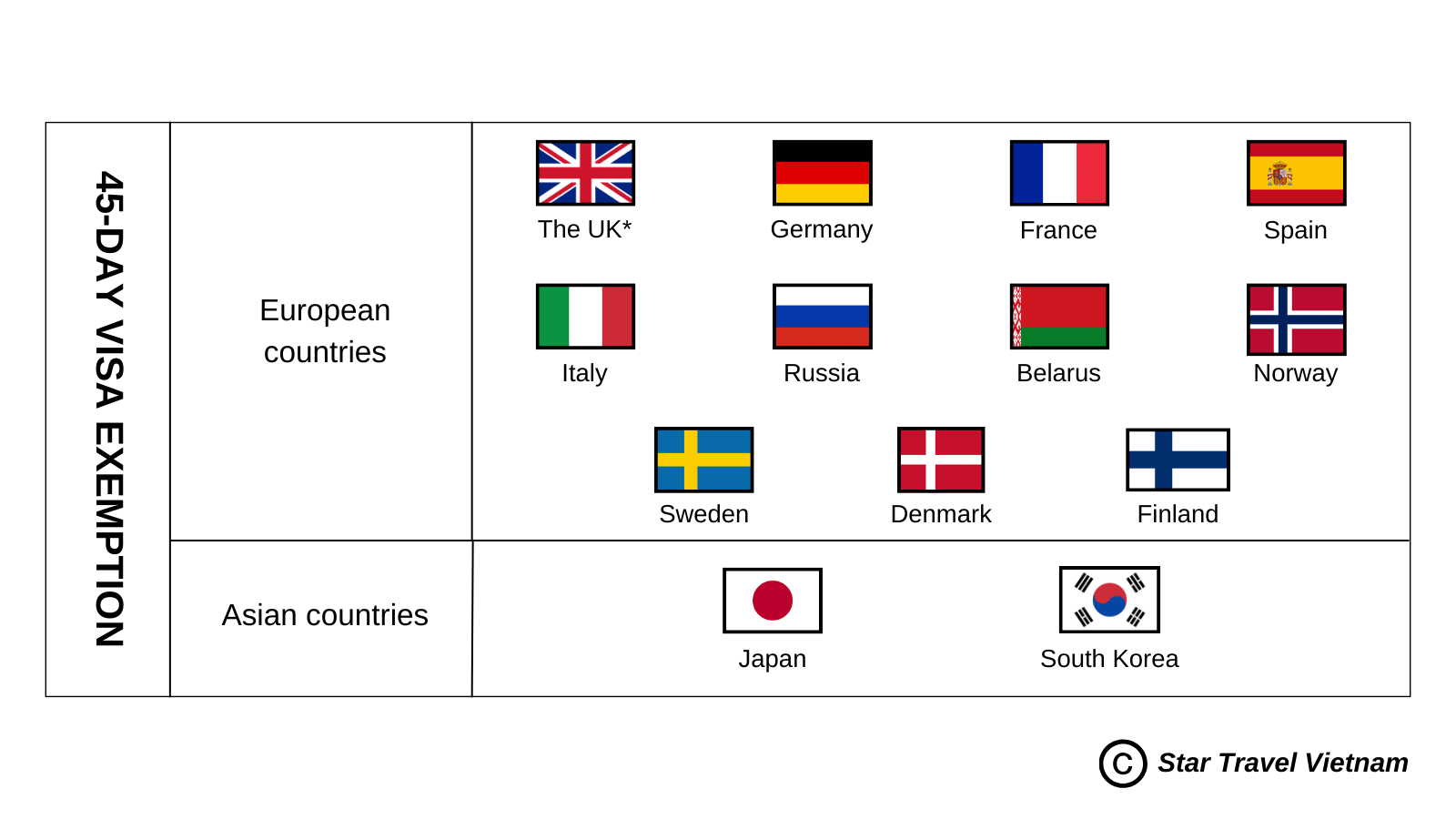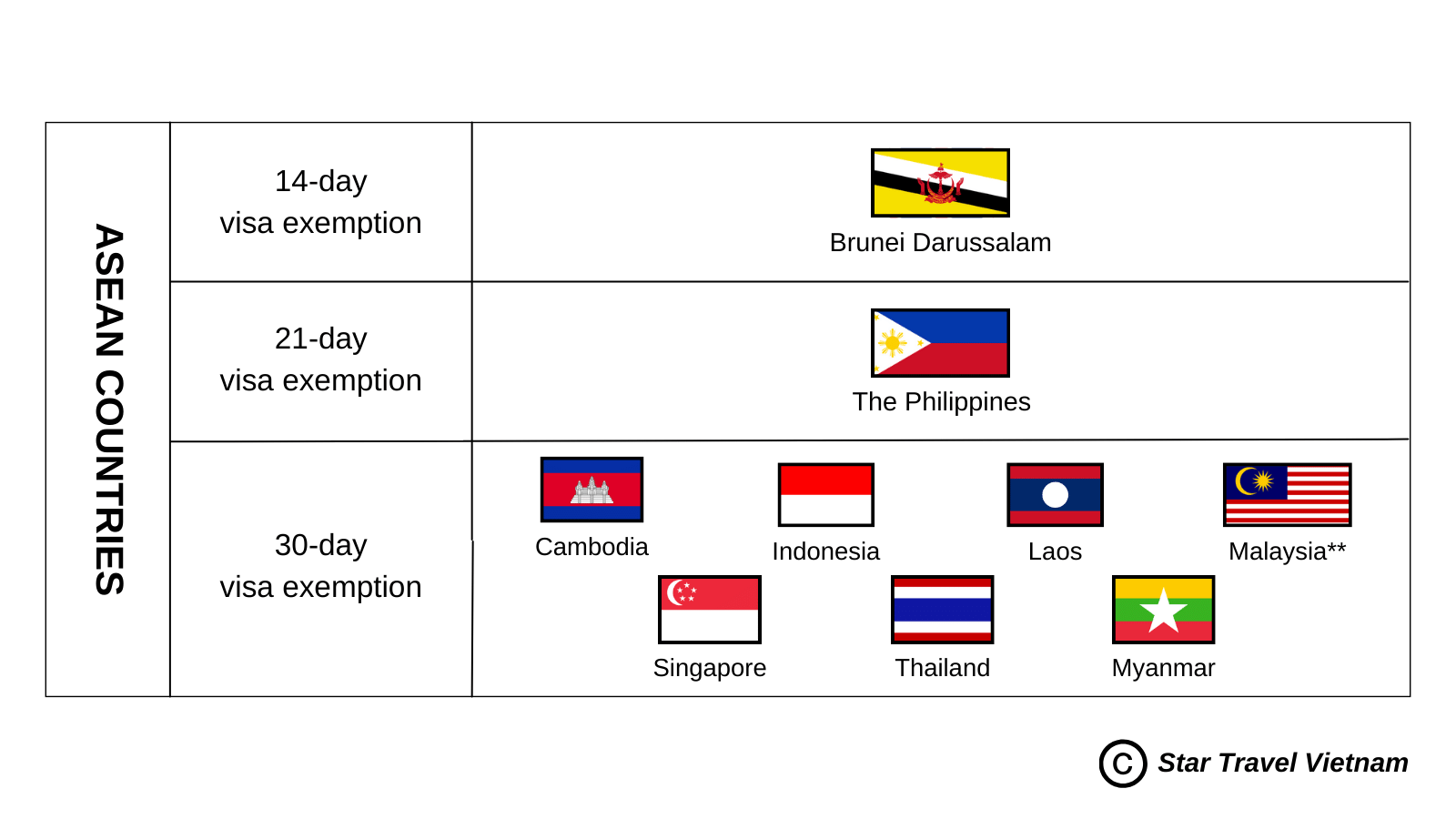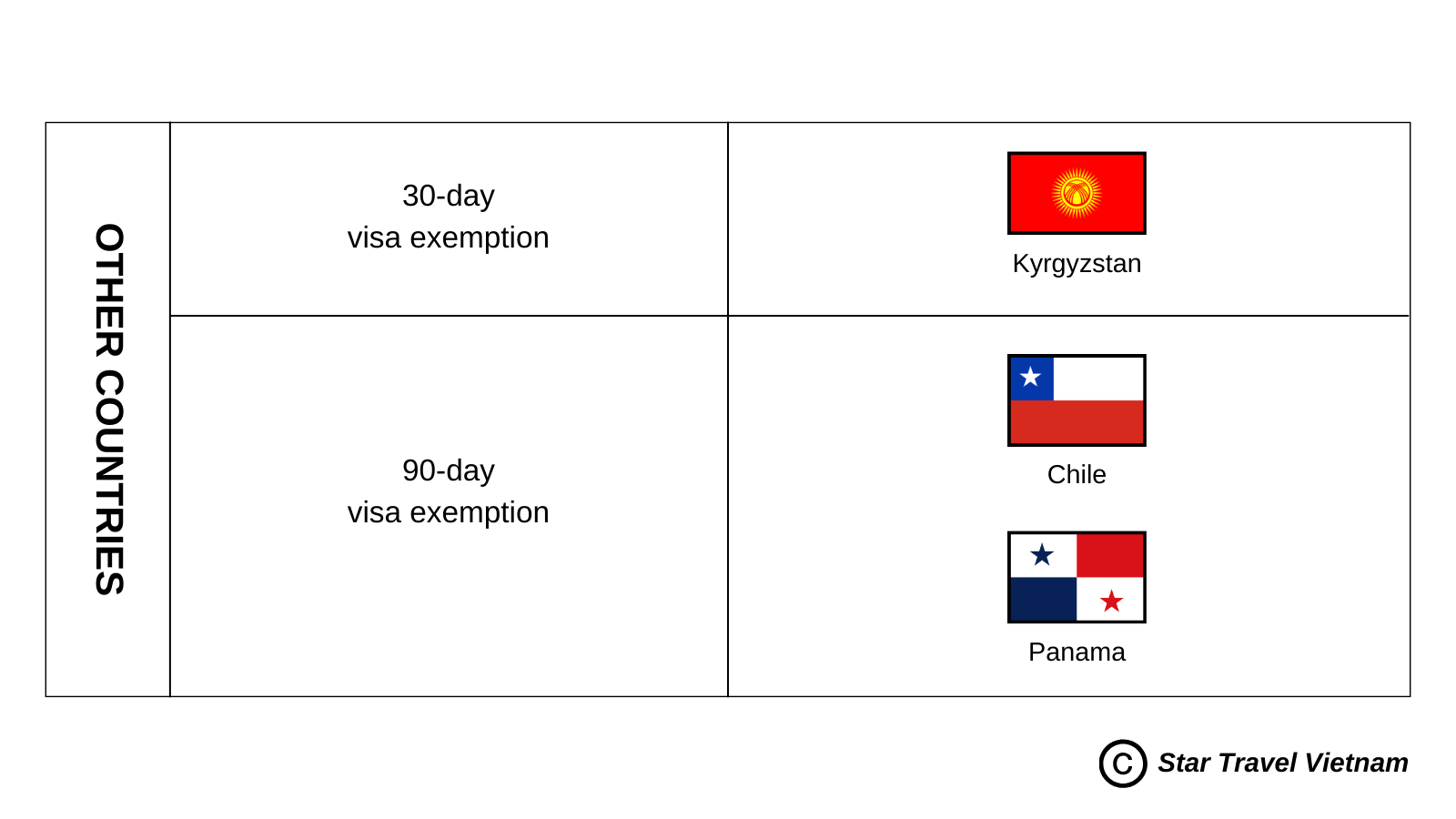Vietnam Visa Exemption
- Do I need a visa to visit Vietnam?
- What are the visa options for international tourists visiting Vietnam?
- Is my passport eligible for visa exemption?
- What do I need to prepare as a visa-free passport holder?
- Can I apply for an extension without leaving Vietnam?
- My passport is not visa-waived. Are there any other visa options available?
Do I need a visa to visit Vietnam?
After 2 years of putting in place strict, yet necessary, travel measures due to the global pandemic, the Vietnamese government has since made multiple commendable attempts to draw back the attraction from international tourists.
Simpler procedures of online visa application via e-visa and the privileges of visa exemption for citizens of 25 countries, that is to enter Vietnam without a visa or paying the related fees, are two most noticeable changes Vietnam has introduced to meet the travel demand of visitors from other countries.
If you are planning to visit Vietnam soon, keep reading to find out whether you are a passport holder with visa exempt status or what to do if you are not.
What are the visa options for international tourists visiting Vietnam?
Effective from August 15, 2023, non-nationals (foreigners) can travel to Vietnam with:
1. An e-visa granting you single entries or multiple entries and up to 90-day stay, applicable to citizens of all countries and territories.
- Legal reference: Resolution No. 127/NQ-CP
2. A VOA (Visa On Arrival or Landing Visa) granting you single entries or multiple entries and up to 90-day stay applicable to citizens of all countries and territories traveling to Vietnam for a tour coordinated by a Vietnamese international tourism firm or other purposes sponsored by an authorized entity.
- Legal reference: Law No. 47/2014/QH13
3. A visa exemption granting you a single entry and up to 45-day stay, applicable to citizens of 11 select European countries, Japan and South Korea.
- Legal reference: Resolution No. 128/NQ-CP
4. A visa exemption granting you a single entry up to 30-day, 45-day or 90-day stay, applicable to citizens of 9 select ASEAN countries, Chile, Kyrgyzstan, and Panama.
- Legal reference: Bilateral visa exemption agreements between Vietnam and these nations
5. A visa exemption granting you a single entry and up to 30-day stay, applicable to travelers arriving at Phu Quoc Island through international airports or sea ports, be it your final destination or transit. Non-native tourists making entries into Vietnam through other border checkpoints outside of Phu Quoc Island can also enjoy this perk provided that your immediate destination is Phu Quoc Island.
- Legal reference: Decision No 80/2020/QĐ-TTg
In any of the above cases, make sure you have at least 6 months of validity upon the arrival date in your passport, at least 2 blank pages in your passport, proof of onward travel to another country such as flight tickets, hotel bookings, etc. and most importantly, no intention in engaging in any remunerated activities during your visit.
Please note that this article only details exempt options available for tourism purposes. You can also get an exemption for being a holder of APEC card or APEC Business Travel Card (ABTC) in terms of business purposes, being a holder of a diplomatic and official passport from one of the 94 eligible countries which have entered a unilateral or bilateral agreement with Vietnam or obtaining a 5-year visa waiver certificate if you are a Vietnamese living overseas, a spouse or a child of a Vietnamese citizen.
Is my passport eligible for visa exemption?
Passport holders from these countries have visa-free access to Vietnam. This also means you are exempt from any fee or processing time associated with the stamped visa.
For select European citizens, Japan, and South Korea

Figure 1. 11 European and 2 Asian countries enjoy visa-waived perks for tourism purposes
*Excluding British National Overseas (BNO) passport holders; If this is your case, check the information below for what steps to follow.
For ASEAN countries

Figure 2. 9 Southeast Asian countries enjoy visa-waived perks for tourism purposes
**Beyond tourism, Malaysian visitors engaging in other activities including press conferences, official duties, relative visits, business negotiations, investment, sports, seminars and conferences are also entitled to similar visa-waived privileges.
FOR COUNTRIES ENTERING BILATERAL AGREEMENTS WITH VIETNAM

Figure 3. 3 countries enjoy visa-waived perks for tourism purposes owing to the active bilateral agreements between their nations and Vietnam
What do I need to prepare as a visa-free passport holder?
Besides what is detailed in the first section, you do not have to prepare anything else in advance. Simply present yourself in person at the airport with a valid passport and receive the entry stamp at the customs gate. Consider this stamp as certified legal proof for your stay and pay close attention to the permitted dates of entry and exit on this stamp before leaving your post at the immigration table.
Can I apply for an extension without leaving Vietnam?
The Covid pandemic has certainly evoked some essential adjustments regarding visa extension in Vietnam.
First and foremost, for single entries, the once compulsory 30-day break between two back-to-back entries has been removed according to Resolution No. 32/NQ-CP effective from July 01, 2020. However, the possibility of an automatic extension inside the territory of Vietnam, especially in visa-free cases, has not yet been activated.
This presents both opportunities and challenges for foreign tourists. On one hand, you do not have to exit Vietnam for as long as 30 days, but it is compulsory to arrange a ‘visa-run’ exit anyhow, with the least hassle at the nearest land borders, if you wish to extend your stay.
The latest directive also encompasses situations in which a visitor seeks to transition from the tourist visa exemption to another type of visa such as business and investment visas, etc. Complementary to this, the process can only commence from your country of origin, not during your stay as a tourist in Vietnam.
My passport is not visa-waived. Are there any other visa options available?
If you cannot find your country of origin in the aforementioned lists, there are other ways to travel to Vietnam with ease. With that said, you are required to obtain these visa types outside Vietnam before your arrival.
E-VISA
Before the e-visa program officially entered into effect on August 15, 2023, its nationwide pilot scheme since 2017, with a view to removing barriers associated with bureaucracy and speed during the process of visa applications, has been proven to be a successful attempt.
Now your visa application can be submitted online following these 3 simple steps:
1. Fill out the required fields with asterisks.
2. Pay a one-time fee according to your choice of single entry ($25) or multiple entries ($50).
3. Track your application's status on the same portal and via your email. When your e-visa is issued, print it out and show the officer at the customs checkpoint.
Remember to always check if you are on the official portal hosted by the Vietnam Immigration Department. Follow our more detailed guide to avoid some common mistakes and improve your chance of getting an e-visa approval on the first try.
VISA ON ARRIVAL (VOA, Landing Visa)
Contrary to the name of this visa type, there is one important document you need to obtain prior to your trip if you want a visa stamp granted upon your landing in Vietnam: the Visa Approval Letter. Apply for one at the Vietnamese embassy or consulate in your country of origin. An arguably faster alternative to apply for the Letter is to engage the service of a visa agency or a Vietnam-based tourism company authorized for handling international clientele, of course with a slightly higher fee.
The next step after retrieving the letter is to fill out the entry-exit form either before or during your flight. At the customs counter, present the letter, the form, with two passport portrait photos to receive the Visa Stamp.
When it comes to fees, contact your nearest Vietnamese embassy/ consulate to arrange payment for the Visa Letter, and take cash with you to pay for the visa stamp service at the Vietnamese airport customs when you land as the authorities do not accept cards or transfers.
Expect the unexpected from our step-by-step guide on Visa On Approval (VOA) which can give you some pointers before your trip.
Reference:
1. “Exemption of Entry Visa to Vietnam List” provided by Consular Department - Vietnam Ministry of Foreign Affairs
